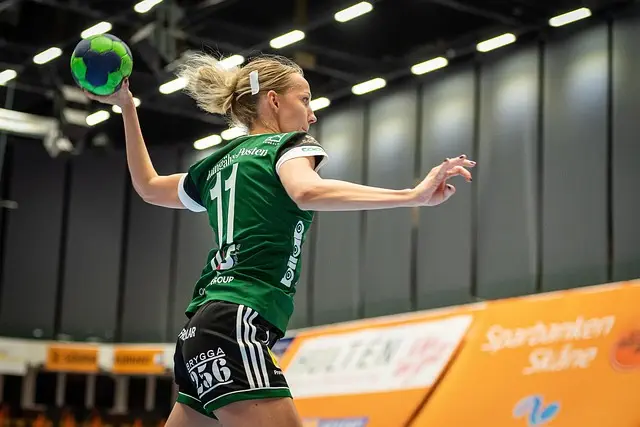Player projection models in fantasy sports leverage historical data and complex algorithms to predict future performances across various statistics, guiding managers in roster construction, trade negotiations, and lineup selection. These models integrate factors like player age, injury history, team dynamics, and advanced metrics for deeper insights, fostering strategic planning and gaining competitive edges. Machine Learning enhances prediction accuracy, enabling fans and analysts to make informed decisions based on diverse models, ultimately constructing winning teams.
Player projection models are essential tools in fantasy sports, enabling managers to predict athlete performance and make strategic team-building decisions. This article delves into the intricacies of these models, exploring key factors like advanced metrics and historical data analysis. We discuss the transformative role of machine learning in enhancing forecast accuracy. By comparing various projection models, we provide insights on optimal team construction, leveraging predictions for success in fantasy leagues.
- Understanding Player Projection Models in Fantasy Sports
- Key Factors in Accurate Athlete Performance Projections
- Advanced Metrics for Enhancing Player Forecast Accuracy
- Historical Data Analysis: A Cornerstone of Projections
- Machine Learning's Role in Revolutionizing Fantasy Forecasting
- Comparing Different Projection Models and Their Strengths
- Strategies for Using Projections to Build Optimal Fantasy Teams
Understanding Player Projection Models in Fantasy Sports

Player projection models are powerful tools in fantasy sports, offering insights into potential future performances of players across various stats, from points scored to rebounds grabbed or yards rushed. These models leverage complex algorithms and historical data to predict how a player might fare in upcoming games based on their past trends, team dynamics, and even external factors like injuries or rest.
In the fast-paced world of fantasy sports, where decisions can make or break your season, these projections serve as a strategic compass. They help managers make informed choices about roster construction, trade negotiations, and lineup selection, giving them an edge over their competitors. By understanding and interpreting player projection models, fantasy players can navigate the intricate landscape of sports performance and elevate their game to new heights.
Key Factors in Accurate Athlete Performance Projections

In the realm of fantasy sports, accurately projecting athlete performance is akin to weaving a intricate tapestry—each thread represents a data point, contributing to the overall picture. Key factors play a pivotal role in unfurling this panorama. First and foremost, historical performance data serves as the foundation. Analyzing past statistics, trends, and consistency helps establish a baseline for expected outcomes. Additionally, player age and injury history are crucial variables; young athletes often exhibit upward trajectory potential, while older players may face decline risks.
Contextual factors, such as team dynamics and coaching changes, also significantly influence athlete performance. The fit within a particular team system can enhance or hinder individual output. Furthermore, understanding the specific position and its demands is essential; different roles necessitate varying skill sets and development trajectories. Integrating these multifaceted elements creates a robust framework for projecting athlete performance in fantasy sports, ensuring more informed decision-making and competitive edges.
Advanced Metrics for Enhancing Player Forecast Accuracy

In the realm of fantasy sports, precision in player projection models is paramount for achieving success. Beyond traditional statistics, advanced metrics are emerging as powerful tools to enhance forecast accuracy. These innovative indicators delve into nuanced aspects of a player’s performance, considering factors like on-field efficiency, health trends, and contextual variables. By incorporating such metrics, projections gain depth, enabling fans and analysts to make more informed decisions.
For instance, advanced analytics might factor in a player’s historical success against specific opponents or their performance under different game conditions. This holistic approach ensures that projections are not just based on past numbers but also account for potential growth areas and mitigating factors. As the use of these sophisticated metrics grows, fantasy sports enthusiasts can expect more dynamic and accurate player forecasts, revolutionizing how they strategize and manage their teams.
Historical Data Analysis: A Cornerstone of Projections

Historical data analysis plays a pivotal role in player projection models for fantasy sports. By examining past performances, trends, and patterns, these models can predict future outcomes with greater accuracy. Analytics professionals sift through vast datasets encompassing statistics like points per game, averages, and head-to-head records to identify consistent performers and emerging talents. This historical perspective allows them to account for various factors influencing player performance, such as age, position, team dynamics, and even contextual elements like home field advantage.
In fantasy sports, where player performances directly impact team success, leveraging historical data is akin to having a crystal ball. Advanced analytics tools enable enthusiasts and professionals alike to uncover hidden gems and make informed decisions. These models continuously learn and adapt as new data becomes available, ensuring that projections remain dynamic and relevant throughout the season.
Machine Learning's Role in Revolutionizing Fantasy Forecasting

Machine Learning (ML) has emerged as a game-changer in the realm of fantasy sports, transforming how fans and analysts predict player performances. By leveraging complex algorithms, ML models can sift through vast amounts of historical data, identifying patterns and trends that were previously difficult to discern. This capability allows for more accurate projections, giving fantasy players an edge by helping them make informed decisions when building their teams.
In the world of fantasy sports, where success often hinges on a few percentage points, these models offer a competitive advantage. They can analyze factors such as player statistics, team dynamics, and even external variables to forecast how an athlete might perform in upcoming games. This innovative approach, rooted in data analysis, promises to revolutionize fantasy forecasting, making it less about guesswork and more about strategic planning.
Comparing Different Projection Models and Their Strengths

In the realm of fantasy sports, player projection models are invaluable tools for managers and enthusiasts alike. When comparing different projection models, several key strengths become evident. Each model offers unique insights based on distinct algorithms and data points, such as historical performance, advanced metrics, and team dynamics. For instance, some models excel at factoring in player health and usage patterns, while others focus on contextual statistics like venue advantages and opponent weaknesses.
The strength of these projections lies not only in their individual accuracy but also in how they complement each other. By utilizing a diverse set of models, fantasy players can gain a more holistic view of a player’s potential output. For example, combining traditional statistical models with machine learning-based predictions allows for a balanced approach, addressing both the art and science of forecasting success in fantasy sports.
Strategies for Using Projections to Build Optimal Fantasy Teams

In the realm of fantasy sports, player projection models serve as powerful tools for crafting optimal teams. By leveraging statistical data and historical performance, these models predict future outcomes, enabling managers to make informed decisions. Using projections, fantasy players can strategize team composition, identifying top performers across various positions. This involves balancing skill, consistency, and potential growth while considering weekly match-ups and opponent strengths.
Optimal team building goes beyond individual talent. Projections facilitate strategic positioning of players based on projected points, yardage, or other relevant metrics. Fantasy managers can then assemble squads with diverse skills, ensuring coverage for different game scenarios. This proactive approach leverages the predictive power of models to stay ahead in the competitive world of fantasy sports.






